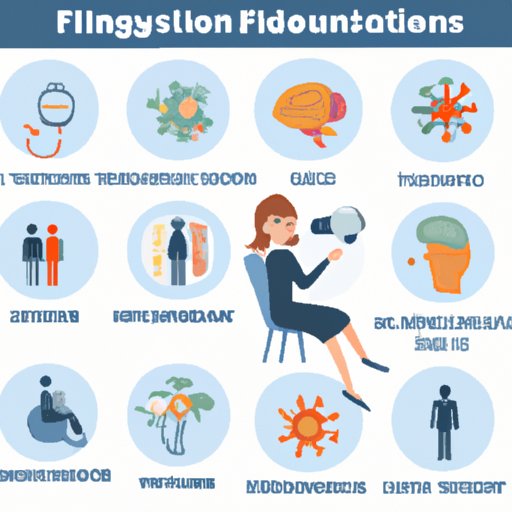
Introduction
Functional symptoms are a type of neurological condition that are often misunderstood by both patients and medical professionals. They refer to physical symptoms that do not have a clear cause or explanation and are not related to underlying structural damage or disease. Instead, they are thought to be related to a disruption in the way the brain and nervous system processes and responds to information. In this article, we will be exploring functional symptoms from a neurologist’s perspective, unpacking the misconceptions, and understanding the truth behind functional disorders.
Decoding the Misconceptions: A Neurologist’s Perspective on Functional Symptoms
One of the most common misconceptions surrounding functional symptoms is that they are not real. However, this could not be further from the truth. While it is true that there is no clear structural damage or underlying disease, functional symptoms are just as real, and oftentimes even more disruptive than other neurological conditions. They can cause a range of physical symptoms, including pain, tingling, weakness, and even seizures.
Another misconception is that functional symptoms are all in the patient’s head or are caused by stress or anxiety. While it is true that psychosocial factors can play a role in functional disorders, they are not the sole cause. Neurological research suggests that a variety of factors, including brain structure and genetics, can contribute to the development of functional symptoms.
The Science Behind the Symptoms: An Insider Look at Neurologists’ Thoughts on Functional Disorders
Diagnosing and treating functional disorders can be challenging due to the lack of clear structural damage or disease. Instead, neurologists must rely on a combination of diagnostic tests, including CT scans, MRIs, and blood work, along with a patient’s medical history and symptom presentation, to make a diagnosis.
Due to the complexity of functional disorders, they are often misdiagnosed or dismissed entirely, making proper treatment difficult to come by. Additionally, the role of psychosocial factors in functional disorders can sometimes lead medical professionals to dismiss the physical symptoms altogether and only focus on the underlying stress or anxiety.
Functional Symptoms in Neurology: Unpacking the Truth According to Experts
Studies have shown that functional symptoms are more common than previously thought, with up to 25% of neurological patients experiencing some form of functional disorder. These disorders can manifest in a variety of ways, including functional seizures, functional movement disorders, and functional pain. Symptoms can also affect various parts of the body, including the limbs, head, neck, and even the digestive system.
While the root cause of functional symptoms is not clear, research suggests that abnormalities in the way the brain processes information could play a role. For example, some studies have found that patients with functional seizures have altered connectivity in regions of the brain associated with emotion regulation and memory.
The Reality and Myths of Functional Symptoms: Neurologists Reveal their Insights
Beyond medical research, neurologists have extensive experience treating patients with functional symptoms. They understand the complexity and challenges of diagnosing and treating functional disorders and the importance of addressing both the physical and psychosocial factors involved.
Neurologists also work to distinguish between functional symptoms and other conditions, such as migraines, multiple sclerosis, and Parkinson’s disease, which have similar symptoms but clear underlying damage or disease. This differentiation is crucial in finding the most effective treatment for the patient.
Navigating the Controversy: Understanding Functional Symptoms from a Neurologist’s Point of View
The controversy surrounding functional symptoms and their treatment largely stems from the lack of clear structural damage or disease. However, this should not discredit the experiences of patients struggling with these disorders. By working collaboratively with their doctor, patients can receive an accurate diagnosis and develop a treatment plan that addresses both the physical and psychosocial aspects of functional disorders.
The bottom line is that functional symptoms are real and often complex neurological conditions that require careful attention and management. By gaining an understanding of the myths and realities of functional disorders from a neurologist’s perspective, patients and medical professionals alike can work to improve the diagnosis and treatment of these challenging conditions.
Conclusion
Functional symptoms can be confusing and even frightening for patients. However, by understanding the reality behind functional symptoms, we can begin to debunk common misconceptions and improve diagnosis and treatment. The insights of neurologists are crucial in bridging the gap between medical understanding and patient experiences, ultimately improving outcomes and patient care.
Whether you are a healthcare provider or someone struggling with functional symptoms, educating yourself on these disorders is key in understanding and managing this complex condition.





